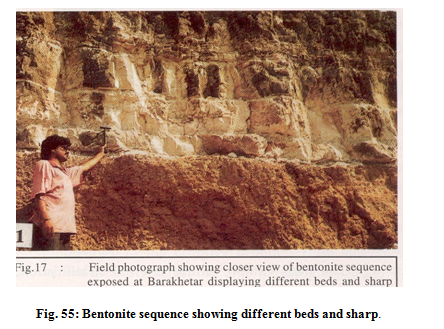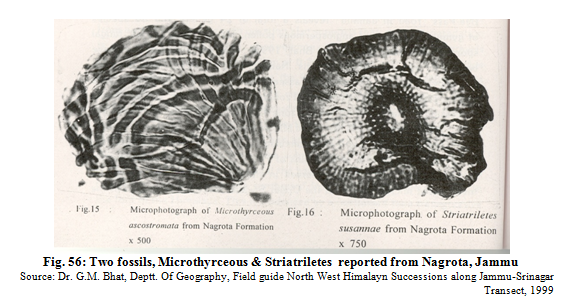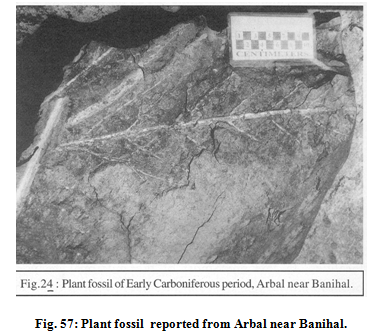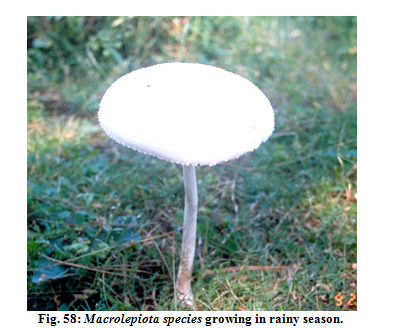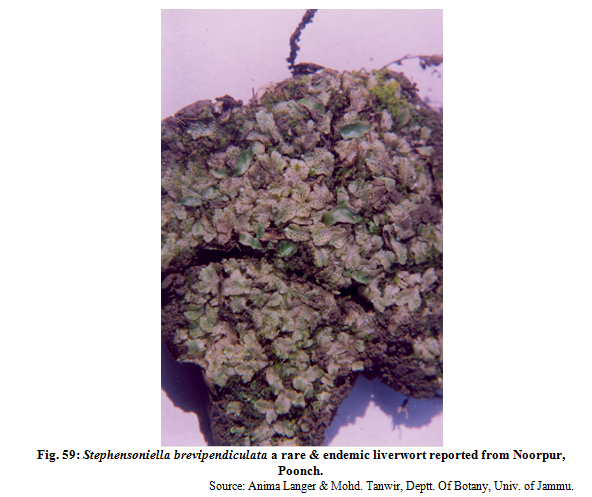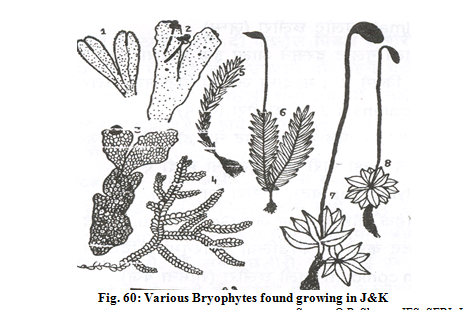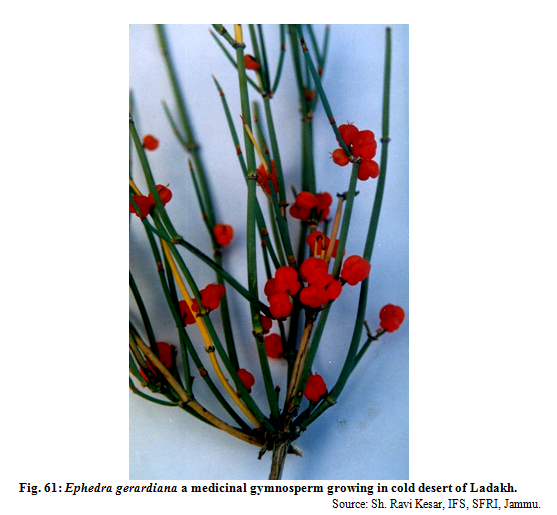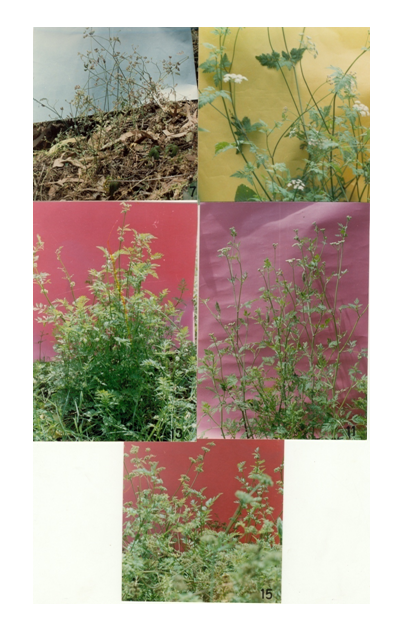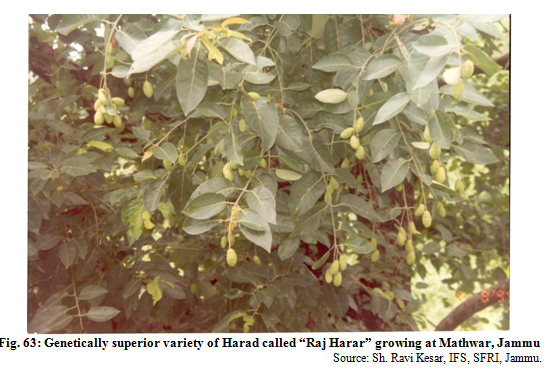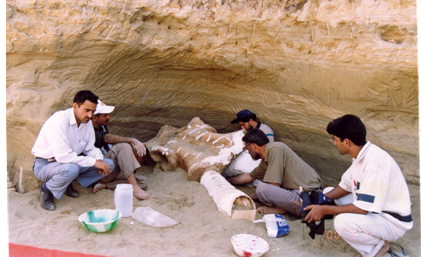Bio-diversity in Jammu, Kashmir, Ladakh: Status Of Biodiversity In J&K
This article has been sourced from an authoritative, official readers who wish to update or add further details can do so on a ‘Part II’ of this article. |
Contents |
The source of this article
Bio-diversity in Jammu, Kashmir, Ladakh
By the Department of Forests, Government of Jammu and Kashmir
Bio-diversity in Jammu, Kashmir, Ladakh: Status Of Biodiversity In J&K
Broadly speaking, Biodiversity of J&K can be categorized into following types of Ecosystems:
1. Biodiversity of Agricultural Ecosystems.
2. Biodiversity of Fresh Water Ecosystems
3. Biodiversity of Forest Ecosystems
4. Biodiversity of Cold Desert Ecosystems.
Wild Biodiversity
All plants and animal forms including microscopic organisms which originated or colonized the available habitats on their own and are thriving without man’s assistance come under the category of Wild Biodiversity. Such life forms are more adopted to local conditions and have the inner resilience to cope with the changing environmental pressures.
Wild Flora of J&K
The perusal of literature on the floristic studies of J&K reveals that Victor Jacquemont (1803-82) was the first botanist to enter the picturesque valley of Kashmir to undertake the floristic study of that time. He collected a large number of plants and his collections were studied by J. Cambessedes & F. Decaisne (1845). W. Morrcraft was the first European to study the plants of Ladakh region.
He also studied the plants of Kashmir valley from 1822 onwards. Godfrey Thomas Vigne (1835) collected 99 specimens from Kashmir and neighbourhood. Falconer, another famous plant collector also made notable collections from Kashmir in 1839. John Forbes Royle sent many collectors to Kashmir during 1833-1839 and published an illustrated account of Kashmir plants in 1839. Thomas Thomson (1848) collected several plants from different parts of the state and data was published in London Journal of Botany Vol. 1 : 68, 1849. Other botanists who ventured into the floristic studies of the Kashmir included Schlagint weit (1855-1877), William Hay (1862), J.L. Stewart (1868) and Handerson & Hume (1873). C.B. Clarke visited Kashmir in 1876 and collected a number of specimens. Duthie (1893-1894) recorded his floristic observations in the Records of Botanical Survey of India.
The first half of the present century witnessed the publication of two important books, B.O. Coventry’s, “Wild Flowers of Kashmir”(1923-30) and E. Blatter’s “Beautiful Flowers of Kashmir” (1927-28). Both these books were known better for their contribution in promotion of popular knowledge than their taxonomic value.
Other notable additions to the floristc studies of the period include the work of Meebold (1909), Keshavanand IFS (1906-08), Steward (1916-1945), Lambert (1933), Blatter(1927), Bamber(1919), Mukerji(1940) and Pennell(1943). Hooker(1872-1897) also described plants of Kashmir in his book, “Flora of British India”. Lambert (1935) listed the forest trees and shrubs of J&K State.
After the reorganization of the Botanical Survey of India, T.A. Rao in 1960 made the first botanical exploration in some parts of the state and account is published in the records of Botanical Survey of India. The explorers of recent times include Kapoor et al (1963, 1986) Y.K. Sarin (1971), Singh and Kachroo (1976) Dhar and Kachroo (1983), Brij Mohan Sharma (1981) who have made contribution towards documentation of various floras of different parts of the State. The recent flora entitled “Flowers of the Himalaya”, by Polunin & Stantion (1984), “Flora of Jammu and Plants of Neighborhood” by B.M. Sharma & P Kachroo (1981), Flora of Trikuta Hills by S.K. Kapoor and Y.K. Sarin (1989), “Flora of Udhampur” (1998) by Ajai Swami & B.K. Gupta and Wild and Cultivated Plants of Jammu, Kashmir and Ladakh by Om. Prakash Vidharthi, IFS (1997) has also contributed towards floristic studies of this State. Some of the notable works in this field are:
Forest Flora of Srinagar and plants of neighborhood by G. Singh & P. Kachroo (1987). 1. The flora of Ladakh by Stewart R.R. (1916-17). 2. Flora of upper Lidder valleys of Kashmir Himalayas by B.M. Sharma & P.S. Jamwal Vol I & Vol II. 3. Flora of Jammu and plants of neighborhood by B.M. Sharma & P. Kachroo (1981). 4. Flora of District Doda of Bachan Lal Whellum & Rani Mangotra (Ph.D. work). 5. In addition to these works in the field of higher plants, exploration and documentation of lower group of plants has also been attempted by various workers and notable works are:
1. Algal Flora of Ladakh by Shashi Kant & Pushp Gupta. (1998).
2. Diversity of Macro fungi of Bhaderwah by Rajkumar Rampal
3. Floristic studies in Bryophytes of Kashmir Himalaya by F.A. Bandey (1997).
4. Taxonomic studies on Hepatic Flora of District Jammu by Sarika Gupta (2002)
5. Hepaticae & Anthocerotae of Jammu Division by Mohd. Tanwir & Anima Langar (Unpublished work).
6. The Hepaticae of Kashmir Valley by S.C. Srivastava (1979).
Based on¬¬ available data (Published and Unpublished) diversity of various plant groups in J&K is represented as under:
Table 26: Plant group wise number of species reported
Group |
Sub Group |
No. of Species reported |
|||
|
<st1:City w:st="on">Jammu</st1:City> Region |
<st1:place w:st="on">Kashmir Region |
Ladakh Region |
J&K |
||
|
Algae |
Cyanophyta Chlorophyta Chrysophyta Bacillariophyta Xanthophyta Dinophyta Euglenophyta Cryptophyta Rhodophyta Charophyta Sub-Total |
13 400 |
054 170 002 163 002 002 013 - - - 406 |
171 440 008 175 015 018 018 001 002 - 848 |
900 |
|
Fungi |
Phycomycetes Ascomycetes Basidiomycetes Deuteromycetes Sub Total |
300 |
023 084 175 140 422 |
11 |
450 |
|
Bryophytes |
Liverworts Hornworts Mosses Sub Total |
66 4 13 83 |
48 - 162 210 |
9 - - 9 |
250 |
|
Pteridophytes |
Ferns |
93 |
93 |
- |
100 |
|
Gymnosperms |
Cupressaceae Ephedracere Ginkgoaceae Pinaceae Taxodiaceae Sub Total |
11 |
04 01
06 01 13 |
3 |
13 |
|
Angiosperms |
Dicots Monocots Sub Total |
1300 |
1590 410 2000 |
880 - 880 |
2403 0651 3054 |
Source: <st1:PlaceType w:st="on">University of Jammu & University of Kashmir (Ph.D. & other research documents consulted)
Fossil records
The Pleistocene flora of Kashmir stands described by Puri (1945 to 48) and Mittre (1964). This flora represented 128 modern species spread over 69 genera & 34 families of angiosperms. Three distinct types of flora identified in the valley are:
1. The Liddermarg Flora: This flora comprised mainly of Quercus leucotrichophora and Quercus glauca which are today totally absent in the area. The other prominent species were those of Pinus, Cedrus, Mallotus, Ficus, Acer, Litsaea, Cinnamomum, Machilus, Phoebe, Buxus, Skimmia, Toddalia, Pittosporum, Rhamnus, Berchemia, Myrsine, Syringa, Wendlandia, Pyrus, Cotoneaster, Alnus, Berberis, Cornus, Parrotiopsis, Dermodium, Inula, Acorus, Scirpus, Cyperus, etc. (Puri, 1960, Miltre, 1964).
2. Laredura Flora: In this type of flora both tropical & temperate elements were discovered but tropical species were predominant. Main tropical species recorded are Woodfordia fruticosa, Mallotus philippenensis, Engelhardtia colebrookiana, Odina woodier & Olea cuspidata.
3.Temperate species include Ulmus wallichiana, Quercus semicarpifolia, Quercus dilatata, Quercus ilex, Betula alnoides, Betula utilis, Acer caesium, Acer villosum, Berberis lycium and Conifer Genera like Pinus, Cedrus & Abies (Puri & Mittre, 1960, 64) Temperate species are still existing in the valley but sub-tropical Geneva like Mallotus, Woodfordia, Myrsine, Engelhardtia & Olea are non-existent today and this supports the view that Liddermarg flora developed under tropical conditions.
3. Ningal Nullah Flora: This flora was usually represented by forms like poplars, willows, cherries, walnuts, maples, elms, elders with an abundance of spruce, silver fir, pine & cedar (Puri et al 1983). Various `modern representatives of these plants still flourish in the Valley and occupy an altitudinal zone between 2100 m & 3000 m on the Northern side of the Pir-Panjal. This indicates that at least in this part of Kashmir, there persisted temperate climate during the pleistocene.
4.The earliest flora reported from J&K is from Early Carboniferous of Kashmir (Liddar Valley, Banihal) to late pleistocene (Siwalik Strata of Jammu), Karewas of Kashmir. The state of J&K is endowed with rich fauna ranging in age from Cambrian to recent fauna include both invertebrates and vertebrates.
A number of publications reporting fauna and flora from the state are available in the records of Geological Society of India and Professional Research Journals of National and International status. The records and research journals are available with GSI and Geology Department, University of Jammu, Jammu. The Departments hosts a record of research publications of last 150 years.
Source: Dr. G.M. Bhat, Deptt. Of Geography, Field guide North West Himalayn Successions along Jammu-Srinagar Transect, 1999
Recent contribution on invertebrate fauna from the state is those of GSI workers, University of Jammu and Wadia institute of Himalayan Geology. The vertebrate fauna reported from the state is mostly from Shiwalik and Karewas strata. The contributions include those of D.N. Wadia, GSI workers, Scientists of Wadia Institute of Himalayan Geology, ONGC and University of Jammu.
Bhat and his co-workers have also reported flora from Lidder valley and Margan pass which is the earliest known flora from the Himalaya (early carboniforous may be U. Silurian). Other reports on flora from J&K state are those of Gangomopteris and Glossoopteris from Zewan and Nishatbagh beds of Kashmir.
Most important vertebrate faunal localities include Ram Nagar (Udhampur), Uttarbani area in Jammu. Karewa beds at Pampore, Shopian, Hirpura, Pattan, etc. These localities have a great potential for fossil fauna and need to be explored.
The type localities for fossil flora include Lidder valley Banihal area, Gulabgarh pass and Nishatbagh and Zewan beds. Siwalik and karewa beds also yield micro fauna and flora. Faculty of the Departments of Geology, University of Jammu is actively engaged in its exploration. They include Prof. G.R. Prasad (micro vertebrates), Dr. M.A. Malik (Micro-invertebrate fauna), Bhat, G.M. and co-workers (micro flora).
Cambrian fossils of Kashmir: Trilobites and Brachiopods, pteropod hyolithes and cysted eucystites.
Ordovician-Silurian fauna: Brachiopods and crinoids, corals and strophomenids. Carboniferous fossils: Brachiopods, Bryozoans, Trilobites, Lamellibranchs, (Flora: Pteridophytes, Gangomopteris beds, Glossopteris,) Amphibian, Archegosaurus ornatus and Fishes - Amblypterus kashmirensis and A. symmetricus.
Fossil Plants: These have been obtained from Liddar valley, Gulabgarh pass, Gulmarg, Khunamuh and Resin Spores, Nagmerg, Bryozoa, Corals and Brachiopods.
Triassic fossils of Kashmir: Ammonoids, (Meekoceras, ophioceras, otoceras,) Lamellibranchs, Brachiopods.
Jurassic: Ammonites, Beleminites, Lamellibranch and Brachiopods.
Cretaceous: Foraminifera, Gastropods and Corals.
Tertiery: Karewas: Representatives of Molluscs and some plants, Elephas, Rhinoceras, Bovids and Mammothus. Birds, Fish and Plants.
Siwalik: Representatives of Equidae, Rhinoceratidae, Suidae, Giraffidae, Bovidae, proboscidea, Anthracotheridae, Hippopotamidae, Primates, stand reported.
The Muree structural formation which is exposed around Patnitop-Batote area represents sandstones, slates, shales and claystones. A bed found in this belt called Larea bed is lenticular with a Palkhai Syncline. The fauna collected consist of 2 fragments of ridge crest of Probo-scidean molar and a dozen species of Lammelli-branches (Khan et al, 1971) which include Nucula, Acila, Nuculana, Mytilus, Unio, Tellina, Apolymetis, Solecurtus, Venus, Meretrix, Pitar, Pholadomya, Lyonsia sp. & Thracia species.
Microflora obtained from Nagrota formation i.e. upper Shivalik sediments exposed at Bantalab-Jammu Byepass road reveals a total of 24 genera and 30 species of Gymnospermous and angiospermous pollen, pteridophytic spores, fungal spores & conidia (Sarkar & Bhat, 1998).
The distributional pattern of spores & pollen grains in the Bantalab upper Shivalik Succession indicates the presence of stagnant fresh water conditions in view of high incidence of Zygospores of Zygnema and Spirogyra.
The presence of Microthyraceous ascostromata indicates a warm and humid climate having rain forest type of vegetation. Occurrence of aquatic pollen grains belonging to Lotus & Typha family as well as pteriodophytic spore Striattriletes suggest a swampy environment in the area.The geological history of the Kashmir Valley has experienced the upliftment of the present Pir Panjal range by about 2000 m to keep the mansoon influences away from present Kashmir (Wadia, 1961). The pre-historic Satisar lake silted up and water was drained off leaving behind remanants in the form of present day lakes like Dal, Manasbal and the Wular. The Karewas lie in isolated tracts and at depths below 300 m having remains of pleistocene age. During ice-age valley experienced several periods of extreme cold alternating with warm periods culminating into the temperate flora of the Kashmir valley.
The Pleistocene flora of Kashmir stands described by Puri (1945 to 48) and Mittre (1964). This flora represented 128 modern species spread over 69 genera & 34 families of angiosperms. Three distinct types of flora identified in the valley are:
4. The Liddermarg Flora: This flora comprised mainly of Quercus leucotrichophora and Quercus glauca which are today totally absent in the area. The other prominent species were those of Pinus, Cedrus, Mallotus, Ficus, Acer, Litsaea, Cinnamomum, Machilus, Phoebe, Buxus, Skimmia, Toddalia, Pittosporum, Rhamnus, Berchemia, Myrsine, Syringa, Wendlandia, Pyrus, Cotoneaster, Alnus, Berberis, Cornus, Parrotiopsis, Desmodium, Inula, Acorus, Scirpus, Cyperus, etc. (Puri, 1960, Mittre, 1964).
Fig. 57: Plant fossil reported from Arbal near Banihal. Source: Dr. G.M. Bhat, Deptt. Of Geography, Field guide North West Himalayn Successions along Jammu-Srinagar Transect, 1999
5. Laredura Flora: In this type of flora both tropical & temperate elements were discovered but tropical species were predominant. Main tropical species recorded are Woodfordia fruticosa, Mallpic otus philippensis, Engelhardti, Colebrookia, Odina woodier & Olea cuspidata. Temperate species include Ulmus wallichiana, Quercus semicarpefolia, Quercus dilatata, Quercus itex, Betula alnoides, Betula utilis, Acer caesium, Acer villosum, Berberis lycium and Conifer Genera like Pinus, Cedrus & Abies (Puri & Mittre, 1960, 64) Temperate species are still existing in the valley but sub-tropical Geneva like Mallotus, Woodfordia, Myrsine, Engelhardtia & Olea are non-existent today and this supports the view that Liddermarg flora developed under tropical conditions.
6. Ningal Nullah Flora: This flora was usually represented by forms like poplars, willows, cherries, walnuts, maples, elms, elders with an abundance of spruce, silver fir, pine & cedar (Puri et al 1983). Various `modern representatives of these plants still flourish in the Valley and occupy an altitudinal zone between 2100 m & 3000 m on the Northern side of the Pir-Panjal. This indicates that at least in this part of Kashmir, there persisted temperate climate during the pleistocene.
7. Thus during the successive stages in the phytogeographical evalution of Kashmir valley since early quaternary as a result of repeated cooling & warming of climate in the pleistocene times together with a cycle of organic movements, the original vegetation got transformed from a sub-tropical type with typical Oak-Laurel community to the present temperate type with pine-deodar-silver fir-cherry-horse-chestnut community and in the process Oak, laurel-chir communities vanished.
Existing Floristic diversity
Algal flora – Algal taxonomic studies in J&K state can be traced back to 1930, when Bhatia initiated the study on freshwater Rhizopods and Flagellates from Kashmir followed by Bharadwaja (1936), Mishra (1937) and Randhwa (1942, 1948) who also contributed towards algal taxonomy in this part of the country. Subba Raju’s notable contribution about the algal flora of Kashmir came in 1963. Saxena & Venkateswarlu (1968) also contributed significantly regarding Desmids of Kashmir. Subsequent efforts by Kant & Kachroo (1971 to 1977), Kachroo (1983), Kant & Anand (1978), Khan & Zutshi (1979), Zutshi & Vass (1977), Kant & Raina (1985) and Kant & Sodhi (1976) also contributed towards documentation of algal elements in the state.
Available records reflects that about 800 species of algae stand reported from various region of state. The Chlorophyceae i.e. green algae forms the largest groups with over 440 species and the Rhodophyceae i.e. red algae is the smallest group with only two representatives in this state. Diatoms and blue-green algal forms are also predominantly represented in various waterbodies having 266 and 171 species respectively (Kant & Vohra, Kant & Gupta).
Work on Charophytes started with the discovery of Lychnothamnus barbatus from Surinsar lake by Kant & Sodhi (1976). During the subsequent explorations regarding the occurrence of Charophytes in Jammu region, V.K. Anand & Gayatry Langer recorded 13 species of Charophytes belonging to 3 genera of Nitella (4), Lychnothamnus (1) and Chara (8). The algae of Ladakh has been extensively studied by Shashi Kant & Pushp Gupta and the findings stand incorporated in their book, “Algal Flora of Ladakh” 1998. In this book, total number of 848 species stand described. Classwise record of new species, varieties, forms and combinations are tabulated as under :-
Table
27: New species, varieties, forms & combinations of Algae reported from Ladakh
</p>|
S. No. |
Class |
Species |
Varieties |
Forma |
Combinations |
|
1. |
Blue green algae |
1 |
– |
– |
– |
|
2. |
Green algae |
16 |
22 |
2 |
6 |
|
3. |
Diatoms |
14 |
10 |
– |
– |
|
4. |
Red algae |
1 |
– |
– |
– |
|
|
Total |
32 |
32 |
2 |
6 |
Source: Algal Flora of Ladakh by S. Kant & Pushp Gupta.
Detailed list of the new species is given under the heading “New records of plants in Jammu & Kashmir”. The detailed list of algal species is at Annexure-II
Mycoflora : Notable contributions in the field of fungal-floral of J&K stand made by D. Ganguly & V.R. Pandotra (1962, 1963, 1964, 1966), T.N. Koul (1957, 1959, 1960, 1961 & 1962), B.B. Mundkar (1944), G.N. Qasba & A.M. Shah (1979, 1980, 1981, 1982), L.E. Wehmeyer (1963, 1964), Raj Kumar Rampaul, Yash Paul Singh & Geeta Sumbli (1998) and Y.P. Sharma (1999-2000). More than 400 species of microscopic and macroscopic fungi stands documented by various workers.
Studies on mycoflora associated with pre-harvest and post-harvest of various rosaceous fruits like quince (Cydonia oblonga), Indian jujube (Ziziphus mauritiana), sweet cherry (Prunus aviurn), plum (Prunus domestica), apple (Malus pumila), crab apple (Docynia indica) and pear (Pyrus communis) stand carried out in Mycology and Plant Pathology Laboratory, Department of Botany in Jammu University by various workers like Geeta Sumbli, Yash Paul Sharma (1977), Yash Paul Singh (2001), Rozy Bamba (2001), Kusum Badyal, Suresh Sharma, Shallu Samyal etc. Sanjana Kaul & Geeta Sumbli (1997 & 2000) has also worked on Keratinophilic fungi collected from poultry farm soils and Indian poultry birds in Jammu. These workers have reported many new records of mycopathogens from different pome fruits. Detail is given in the table as under:
Table 28: New records of mycopathogens found in stored pome fruits at <st1:City w:st="on">Jammu</st1:City> Wholesale Market (Yash Paul Singh & Geeta Sumbli, 2000).
|
Pome fruits |
Mycopathogens reported |
|
Apple |
Aspergillus niveus A. sydowi Emericella nidulans Fusarium proliferatum Penicillium chrysogenum P. citrinum P. crustosum P. miniotuteum P. purpurogenum Trichoderma pseudokoningii |
|
Pear |
Fusarium verticellioides Pencillium chrysogenum P. citrinum P. minioluteum P. pinophilum |
|
Crab apple |
Alternaria alternata Botrytis cineraea Exosporiella fungosum Fusarium proliferatum Fusarium verticillioides Geotrichum candidum Penicillium chrysogenum Rhizopus stolonifer Trichothecium roseum |
Source: Dr. Geeta Sumbli, Pathology laboratory, Deptt. Of Botany, Univ. of Jammu.
Earlier workers who have contributed towards exploration and documentation of macro fungi in J&K are Murill (1924), Kaul & Kachroo (1974), Kaul et al. (1978), Abraham et al. (1980, 1981, 1984), Watling (1980), Watling & Gregory (1980) and Watling & Abraham (1986).
Raj Kumar Rampal in his Ph.D. thesis titled, “Ecological Studies on the Macrofungi of Bhaderwah Forests, Jammu (J&K)” submitted to University of Jammu, has enlisted 80 species of macro-fungi growing in different ecological sites under high altitude coniferous forests of Bhaderwah. Detail of various species alongwith habit, altitude and edibility is given in the table :
Table 29: Habitat and distribution of Macro fungii reported from Bhaderwah
Name Habit Altitude Distribution Remarks A. macrosporus Humicolous 6000-7000 Bhaderwah New for India Agrocybe pediades Humicolous 6000-7000 Bhaderwah --- Amanita flavoconia Humicolous 6000-7000 Bhaderwah New for J&K A. pantherina Humicolous 6000-7000 Bhaderwah --- A. vaginata Humicolous 6000-7000 Bhaderwah Edible Asterophora lycoperdioides Parasitic 6000-6500 Bhaderwah --- Astraeus hygrometricus Humicolous 6000-7000 Bhaderwah --- Bolbitus vitellinus Coprophilous 6000-6500 Bhaderwah New for J&K Bovista plumbea Humicolous 6000-7000 Bhaderwah Edible Calvatia caelata Humicolous 6000-7000 Bhaderwah Edible C. elata Humicolous 6000-7000 Bhaderwah Edible Cantharellus cibarius Humicolous 6000-7000 Bhaderwah Edible C. infundibuliformis Humicolous 6000-7000 Bhaderwah Edible Chalciporus piperatus Humicolous 6000-7000 Bhaderwah Edible & new for J&K Clavaria vermicularis Humicolous 6000-7000 Bhaderwah Edible Coltricea montegneii Humicolous 6000-7000 Bhaderwah --- C. perennis Lignicolous 6000-7000 Bhaderwah --- Conocybe pilosella Humicolous 6000-7000 Bhaderwah New for J&K C. tenera Humicolous 6000-7000 Bhaderwah New for J&K Copelandia cyanescens Coprophilous 6000-6500 Bhaderwah New for J&K Coprinus atramentarius Humicolous 6000-7000 Bhaderwah Edible C. comatus Humicolous 6000-7000 Bhaderwah Edible C. plicatilis Humicolous 6000-7000 Bhaderwah --- Crucibulum leave Lignicolous 6500-7000 Bhaderwah New for J&K Fomes sp. Humicolous 6000-7000 --- --- F. ulmarius Lignicolous 6000-7000 Bhaderwah --- Gamoderma lucidium Lignicolous 6000-7000 --- --- G. resinaceum Lignicolous 6000-7000 --- --- Geastrum drummondii Humicolous 6000-7000 Bhaderwah New for J&K G. fimbriatum Humicolous 6000-7000 Bhaderwah New for J&K G. pectinatum Humicolous 6000-7000 Bhaderwah New for J&K G. triplex Humicolous 6500-7000 Bhaderwah --- G. velutinum Humicolous 6000-7000 Bhaderwah --- Geopora arenicola Humicolous 6000-7000 Bhaderwah Edible Geopyxis catinus Humicolous 6000-7000 Bhaderwah New for J&K Helvella atra Humicolous 6000-7000 Bhaderwah Edible H. crispa Humicolous 6000-7000 Bhaderwah Edible & new for J&K H. elastic Humicolous 6000-7000 Bhaderwah Edible & new for J&K Hohenbuehelia petaloides Lignicolous 6000-6500 Bhaderwah Edible & new for J&K Hydnum repandum Humicolous 6000-7000 Bhaderwah Edible Innocybe cinnatula Humicolous 6000-7000 Bhaderwah --- I. fastigiata Humicolous 6000-7000 Bhaderwah --- I. lanuginosa Humicolous 6000-7000 Bhaderwah New for India Lactarius deterrimus Humicolous 6000-7000 Bhaderwah Edible Lentius lepideus Lignicolous 6000-7000 Bhaderwah Edible Leucopaxillus giganteus Humicolous 6000-7000 Bhaderwah Edible Lycoperdon perlatum Humicolous 6000-7000 Bhaderwah Edible L. pusillum Humicolous 6000-7000 Bhaderwah --- Lycoperdon pyriforme Humicolous 6000-7000 Bhaderwah Edible L. pusillum Humicolous 6000-7000 Bhaderwah --- Lycopesdon pysiforma Humicolous 6000-7000 Bhaderwah --- L. umbrinum Humicolous 6000-7000 Bhaderwah Edible & new for J&K Macrolepiota gracilenta Humicolous 6000-7000 Bhaderwah New for India Morchella conica Humicolous 6000-7000 Bhaderwah Edible M. deleciosa Humicolous 6000-7000 Bhaderwah Edible M. esculenta Humicolous 6000-7000 Bhaderwah Edible M. hybrida Humicolous 6000-7000 Bhaderwah Edible Otidea leporina Humicolous 6000-7000 Bhaderwah Edible & new for J&K Paneolus ater Coprophilous 6000-7000 Bhaderwah New for J&K Paxillus penioides Lignicolous 6000-7000 Bhaderwah --- Phellodon tomentosus Humicolous 6000-7000 Bhaderwah --- Pholiota squarrosa Humicolous 6000-7000 Bhaderwah Edible Polyprus arcularia Lignicolous 6000-7000 Bhaderwah Edible Psathyrella candolleana Humicolous 6000-7000 Bhaderwah --- Psilocybe corprophila Coprophilious 6000-7000 Bhaderwah --- Ramaria apiculata Humicolous 6000-7000 Bhaderwah Edible R. flavo-brunnescens Humicolous 6000-7000 Bhaderwah --- R. stricta Humicolous 6000-7000 Bhaderwah Edible & new for J&K R. vermicularis Humicolous 6000-7000 Bhaderwah --- Rhizopogon luteolus Humicolous 6000-7000 Bhaderwah --- Rhizopogon rubescens Humicolous 6000-7000 Bhaderwah Edible Russula foetens Humicolous 6000-7000 Bhaderwah Edible & new for J&K R. krombhozii Humicolous 6000-7000 Bhaderwah New for J&K R. pseudodalica Humicolous 6000-7000 Bhaderwah New for India R. quelletii Humicolous 6000-7000 Bhaderwah New for India R. xeremphalina Humicolous 6000-7000 Bhaderwah New for J&K Schizophyllum commune Lignicolous 6000-7000 Bhaderwah Edible Scleroderma geaster Humicolous 6000-7000 Bhaderwah New for J&K S. verrucosum Humicolous 6000-7000 Bhaderwah Edible & new for J&K Sepultaria arenosa Humicolous 6000-7000 Bhaderwah New for J&K Sparassis crispa Humicolous 6000-7000 Bhaderwah Edible Sparassis radiata Humicolous 6000-7000 Bhaderwah Edible Strobilinus stephanocystis Lignicolous 6000-7000 Bhaderwah New for India Tramates scabrosa Lignicolous 6000-7000 Bhaderwah New for India Trichatum abiotinum Lignicolous 6000-7000 Bhaderwah --- Tyromyces fragilis Lignicolous 6000-7000 Bhaderwah New for India Source: Dr. Raj Kumar Rampal, Deptt. Of Environmental Sciences, University of Jammu. Five species of macrosopic ascomycetes has been reported by Shashi Kant & Raj Kumar Rampal (1990) as new records for J&K and they are Geopyxis catinus, Helvella atra, Helvella elastica, Otidea leporina and Septularia arenosa.
Five new records of clavariace reported from Bhaderwah forests (J&K) are Clavaria vermicularis, Ramaria apiculata, Ramaria flavobrunnescens, Ramaria stricta and Sparassis crispa (Shashi Kant & Raj Kumar Rampal, 1991). The detailed list of Fungal Taxa is given in Annexure-III
Bryophytic flora : Among five bryogeographically rich units of Indian sub-continent, Himalayan region is one of the richest area as far as bryophytic wealth is concerned. West Himalayan territory being comparatively more dry has less bryophytic diversity as compared to East Himalayas but this part of region has also a good number of endemics. Various taxa endemic to this region are Radula (4 sp.), Frullania (6 sp.), Cryptomitrium himalayensis, Aitchinsoniella himalayensis, Cyathodium indicum, C. flabellatum, Geocalyx graveolens, Exormotheca tuberifera, Stephensoniella brevipendiculata, P. himalayensis etc. (Srivastava, 1998). This region is also the centre of distribution of Chiloscyphus as maximum diversity exists here.
Out of three regions of the state, only Kashmir has attracted the attention of earlier bryologists like Stephani (1900-1924), Kashyap (1929-1932), Robinson (1965), Kaul & Dhar (1968) and Srivastava (1979). Recently Bandey (1997) has explored the bryophytes of Gulmarg and adjacent regions like Khillanmarg, Tangmarg, Ferozpur, Khagh, Arizal, Poshkaur and Beerwah of Kashmir and collected 63 species including 14 liverworts and 49 mosses. Of these 6 liverworts are new records for Kashmir valley and they include Blepharostoma trichophyllum, Lophocolea bidentata, Marchantia nepalensis, Plagiochila ferruginea, P. spinulosa and Riccardia pinguis. Later, Bandey et al. (1998) enlisted 48 liverworts from Kashmir valley including 25 foliose and 23 thallose forms and reported total absence of hornworts in the valley.
Bryo explorations in Jammu region were started by Om Prakash (1983-84) and he reported 27 liverworts, 2 hornworts and 13 mosses from Jammu plains and Udhampur hills (data unpublished). Mohd. Tanwir (2000) carried extensive survey in tehsil Mendhar of Poonch district and collected 38 taxa of bryophytes (19 foliose and 19 thallose liverworts and 1 hornwort). Tanwir & Langer (2002) added more hepatic taxa to thsi list and now the total number of hepatics from Jammu region has gone upto 70 (data unpublished). Out of this, 13 species reported are rare and endemic to the region and are enumerated as under :-
S. No. Name of Taxa Status 1. Metzgeria himalayensis Endemic 2. M. conjugata Extremely rare 3. Jungermannia gollani Endemic 4. Plagiochila woronofii Endemic 5. Astrella angusta Endemic 6. A. reticulata Rare 7. Athalamia pinguis Rare & Endemic 8. A. pusilla Rare & Endemic 9. Marchantia kashyapii Endemic 10. Targionia indica Endemic 11. Wisnerella denudata Rare 12. Stephensoniella brevipendiculata Rare & Endemic 13. Anthoceros bharadwajii Endemic (Source : After Aneema Langar & Mohd. Tanwir)
Pant (1983) reported a hepatic species as disappearing fast from Nainital. Out of these nine sp. six stand reported from Jammu and these are Athalamia pinguis, Dumortiera hirsuta, Reboulia hemispherica, Stephensoniella brevipendiculata, Wiesnerella denudata and Conocephalum conicum. Other three species reported by Pant from Nainital are Cryptomitrium himalayensis, Fossombronia himalayensis and Sewardiella tuberifera and these awaits discovery from this region. The detailed list of Bryophytes is given in Annexure-IV.
Pteridophytic flora : Many workers including Clarke (1880), Hope (1903), Stewart (1945, 1957, 1982), Bir (1964), Bir & Trikha (1968, 1976), Bir et al. (1980, 1985), Dhir (1980), Dixit (1984), Dixit & Das (1979), Gupta (1962), Khullar & Sharma (1980), Mahabale (1962), Satija et al. (1983) and Fraser Jankeins (1984) have made notable contributions in the field of pteridophytic flora of India including Jammu & Kashmir. In Jammu & Kashmir, Javeid (1965) explored ferns and fern allies of Srinagar and Kapoor & Sarin (1977, 1982) made some contribution with regard to ferns of Jammu particularly Trikuta Hills. Kiran & Sharma (1976) and Kiran & Singh (1981) have dealt with ferns of Poonch district, Kant & Kaushal (1996) and Kant & Anil Raina (1988) made some documentation of Patnitop and Bhaderwah area of Doda district.
As per available published record, 93 species of pteridophytes (ferns and fern allies) stand reported by different workers from Jammu region and maximum pteridophytic diversity exists in Poonch, Bhaderwah and Basohli areas of Jammu. The detailed list of Pteridophytes is given in Annexure-V Gymnospermic flora : Although, the gymnospermic diversity is not rich in the state, yet gymnosperms form the dominant component of high altitude forests called Coniferous Forests. Dhar (1966,68) was probably the first worker to provide a concise account of the distribution of conifers in India including J&K.
In the state of J&K, about 14 species of different Gymnosperms grow wild in different areas, 4 species belonging to cupressaceae; 2 species of Ephedraceae ; 7 species of Pinaceae; 1 species of Taxaceae and their list is as under:- 1. Cupressus torulosa
2. Juniperus communis
3. Juniperus semiglobosa
4. Juniperus squamata
5. Ephedra gerardiana
6. Ephedra intermedia
7. Abies pindrow
8. Abies spectabilis
9. Cedrus deodara
10. Picea smithiana
11. Pinus gerardiana
12. Pinus roxburghii
13. Pinus wallichiana
14. Taxus wallichiana.
Source: Sh. Ravi Kesar, IFS, SFRI, Jammu.
About twenty four gymnosperm species are also seen under cultivation in the state and they are:-
1. Cupressurs arizonica
2. Cupressus cashmeriana
3. Cupressus corneyana
4. Cupressus glabra
5. Cupressus guadalupensis
6. Cupressus sempervirens
7. Juniperus chinensis
8. Thuja orientali
9. Ginkgo biloba
10. Pinus canariensis
11. Pinus halepensis 12. Pinus radiata
13. Crypromeria japonica
14. Sequiodendron giganteum (Only one tree seen at Tangmarg)
15. Taxodium distichum (Only one tree seen at Jammu)
16. Podocarpus wallichianus
17. Agathis robusta (only in Jammu)
18. Araucaria bidwillii
19. Araucaria cookii
20. Araucaria heterophylla
21. Cycas revoluta
22. Cycas circinalis (Only in Cactus garden, University of Jammu)
23. Zamia furfuracea
24. Ephedra foliata (Only one plant at Jammu)
The detailed list of Gymnospermes is given in Annexure-VI
Angiospermic Diversity : Different workers have contributed towards floristic studies from different areas of Jammu & Kashmir. Floristic explorations in J&K started with W. Moorcraft’s collections from Ladakh (1821 onwards). Jacquemont collected samples from Rajouri, Thanamandi, Bhimber and parts of Kashmir (1838-1840). Royle’s Flora of Cashmere was published in 1839. Hooker’s Flora appeared between 1872 and 1897. This work made a passing reference to the Jammu plants. Stewart’s Ladakh Flora was published in 1916-1917. Duthie (1894), Meebold (1909), Blatter (1927-1928), Coventry (1923-1930) also made extensive collections from Kashmir. Plants of Jammu received attention in Bamber’s Flora of Punjab (1916). Lambert (1933) gave a list of trees and shrubs of Jammu Forest Circle. Rao (1960-1961) also described the vegetation of Jammu & Kashmir provinces. In the first volume on “Flora of Upper Lidder Valleys of Kashmir Himalaya” by B.M.
Sharma & P.S. Jamwal (1988), 295 species were documented and described which included 6 species of Gymnosperms, whereas in the 2nd vol. (1998) which dealt with the remaining families (not included in 1st vol.) 463 species were described. In all, enumeration of 758 species were given in two volumes, for the area under survey. In the subsequent effort, “Weed Flora of Kashmir Valley” was prepared by M.K. Kaul (1985) wherein description of 401 weed species was incorporated having 223 native and 178 introduced species. In “Forest Flora of Srinagar” 1976 by Gurbachan Singh & P. Kachroo, a total of 661 species in 376 genera of angiosperms stands dealt with (in contrast to 2104 species under 750 genera reported from Kashmir).
It deals exclusively with the flora of Dachigam National Park. “Flora of Ladakh” by G. Singh & P. Kachroo, the “Alpine Flora of Kashmir Himalaya” 1983 by Dhar & Kachroo, M.K. Kaul (1986) recorded 401 species of Flowering weeds in the Kashmir Valley, “Flora of Jammu and Plants of Neighbourhood” 1987 by B.M. Sharma & P. Kachroo, exhaustive floristic account of flowering plants stands documented. In “Flora of Upper Lidder Valley of Kashmir Himalaya” Vol. 1 (1988) Sharma and Jamwal have described 301 species belonging to 130 genera under 35 families and in Vo, 2 published in 1988 same Authors have described a total of 463 species under 211 genera and 51 families. The “Ara et al 1995 listed 295 species of indegenious and exotic species from Kashmir. “Wild & Cultivated Plants of Jammu, Kashmir & Ladakh” 1997 by O.P.
Vidyarthi listed 2300 species which however includes many ornamental exotics, both herbaceous as well as woody. More than 300 species stand reported from Ladakh by different workers. The work done by O.P. Chaurasia in the Defence Research Laboratory, Leh under the Ministry of Defence is more exhaustic and comprehensive in dealing with Cold Desert Plants of Ladakh. He has enumerated about 350 species from various regions of Ladakh. ‘The Flora of Udhampur District’ was completed by Ajai Swami & B.K. Gupta (1997) under the Botanical Survey of India’s scheme titled, “India District Flora Scheme”. In this flora, a systematic analysis of 807 species belonging to 495 genera stands given. Another work relates to Flora of Trikuta Hills by Kapur & Sarin. A Ph.D. work done by Bachan Lal Whellum deals with Flora of District Doda wherein 400 species stands systematically analysed.
Fig. 62: Species diversity within Genus Torilis
Top left: T. arvensis; Top right: T. japonica
Middle left: T. leptophylla; Middle right: T. nodosa;
Bottom: T. stocksiana Source: Dr. Irshad Ahmad Hamal, Deptt. of Botany, Univ. of Jammu. According to Virjee et al. (1989) state of Jammu & Kashmir has 3054 species of higher plants. Out of total species, 2403 are Dicots and 651 are Monocots (P. Kachroo, 1993). Extent of endemism is about 39% for Dicots and 19% for Monocots (Dhar & Kachroo, 1983). The families with highest percentage of endemism in alpine and sub-alpine Himalayas are enumerated as under :-
Table 30: Families having maximum endemism in Kashmir Himalaya S. No. Name of Family Extent of Endemism 1. Adoxaceae 100% 2. Balsaminaceae 66% 3. Berberidaceae 64% 4. Fumariaceae 55% 5. Violaceae 54% 6. Apiaceae 54% 7. Gentianaceae 54% 8. Saxifragaceae 53% 9. Asteraceae 52% 10. Scrophulariaceae 52% 11. Celastraceae 50% 12. Aceraceae 50% 13. Valerianaceae 50% 14. Dipsacaceae 50% 15. Campanulaceae 50% 16. Fabaceae 49% Source: Dhar & Kachroo, 1983
Extent of endemism in various families of Kashmir Himalaya is given in the table:
Table 31: Endemism in different families of flowering plants of Kashmir Himalaya
% Endemism Family % of Total taxa 50% or more Saxifragacae 53.57 Fumariaceae 52.00 Violaceae 50.00 Rutaceae 50.00 Valerianaceae 50.00 Dipsacaceae 50.00 Campanulaceae 50.00 30-50% Gentianaceae 49.09 Apiaceae 45.16 Scrophulariaceae 44.71 Balsaminaceae 42.86 Asteraceae 39.82 Primulaceae 39.53 Fabaceae 39.20 Berberidaceae 38.89 Aceraceae 33.33 Parnassiceae 31.34 10-30% Ranunculaceae 29.35 Caprifoliaceae 29.17 Asclepiadaceae 28.57 Euphorbiaceae 28.57 Lamiaceae 27.16 Chenopodiaceae 26.32 Brassicaceae 25.77 Acanthaceae 25.16 Orobanchaceae 25.00 Urticaceae 25.00 Crassulaceae 21.74 Polygonaceae 20.63 Tamaricaceae 20.00 Ericaceae 20.00 Caryophyllaceae 19.44 Rubiaceae 19.05 Rosaceae 18.27 Onagraceae 17.39 Papaveraceae 16.67 Solanaceae 14.29 Plantaginaceae 14.29 Salicaceae 14.29 Source: Kachroo, 1993.
Table 32: Extent of endemism in Kashmir
Dicots Monocots Total taxa 2403 651 Short range endemics (Kashmir + Afghanistan) 326 (13.56%) 37 (5.68%) Broad range endemic (Afghanistan to north Burma) 518 (24.93%) 86 (14.00%) Total endemic taxa 844 (35.12%) 123 (18.89%) Source: Kachroo, 1993
Table 33: Endemic taxa of legumes
Taxa West Himalaya Trans Himalaya Abus fruticulosus + Acacia pseudoeburnea + Astragalus gilgitensis + Astragalus imitensis + Astragalus kashmirensis + Astragalus maddenianus + Astragalus malaccophyllus + + Astragalus maxwellii + Astragalus multiceps + Astragalus pindeerensis + Cassia davidsonii + Hedysarum astragaloides + Hedysarum falconeri var. cachemirianum + Hedysarum microcalyx + Hedysarum pseudomicrocalyx + + Indigofera cedrorum + Indigofera gangetica + Indigofera hamiltonii + Indigofera himalayensis + MeizOtteropis pellita + Oxytropis shivai + Trigonella podperae + Source: Rao & Husain, 1993
The 10 dominant families for Udhampur district are Poaceae, Asteraceae, Papilionaceae, Lamiaceae, Rosaceae, Scrophulariaceae, Apiaceae, Brassicaceae, Acanthaceae and Euphorbiaceae. Whereas 10 dominant families for Jammu district are Leguminosae, Poaceae, Asteraceae, Cyperaceae, Scrophulariaceae, Lamiaceae, Euphorbiaceae, Acanthaceae, Amaranthaceae and Brassicaceae. A comparison of largest families and genera of plants in the three regions of Jammu, Kashmir and Ladakh is represented in the form of a table :- Table 34: Comparison of the First 10 large families of angiosperms in Jammu, Kashmir and Ladakh. S.No. Jammu Kashmir Ladakh 1. Leguminosae (79/36) Asteraceae (260/72) Asteraceae (125/38) 2. Poaceae (71/54) Poaceae (160/73) Poaceae (101/33) 3. Asteraceae (52/39) Brassicaceae (115/44) Brassicaceae (64/31) 4. Cyperaceae (38/7) Rosaceae (98/32) Papllionaceae (55/12) 5. Scrophulariaceae (23/14) Lamiaceae (88/32) Cyperaceae (50/5) 6. Lamiaceae (22/17) Papilionaceae (84/34) Scrophulariaceae (45/8) 7. Euphorbiaceae (22/14) Cyperaceae (81/9) Ranunculaceae (43/12) 8. Acanthaceae (18/14) Scrophulariaceae (77/19) Boraginaceae (35/15) 9. Amaranthaceae (12/9) Ranunculaceae (70/17) Caryophyllaceae (35/12) 10. Brassicaceae (10/9) Apiaceae (68/37) Lamiaceae (32/13) Source: Biodiversity of the Kashmir Himalaya, G.H. Dar, R.C. Bhagat, M.A. Khan, Univ. of Kashmir, 2002.
As per the floristic and phyto geographic analysis, the flora of Jammu & Kashmir state depicts some elements of various other countries and regions of the world. The detail is as under :- 1. Circumpolar species : Species like Lactuca tatarica, Lapsana communis fall under this category and they occupy the circumpolar range. 2. Boreal species : Species like Polemonium caeruleum, Caltha palustris, Ranunculus trichophyllus, Circaea alpina etc. come under this category and are usually distributed in the temperate and high altitude zones of the state. 3. European North Asiatic species : Some plants like Arenaria serpyllifolia, Galium aparine, Carum carvi, Stellaria media, Melilotus alba, Medicago lupulina, Achillea millefolium, Potentilla anserina, Thlaspi arvense etc. shows affinity with European and North Asiatic elements. Many weeds of cultivation also fall under this category. 4. Central-Asiatic elements : Alpine and sub-alpine flora of high altitude cold desert of Ladakh shows these types of elements and they are represented by genera like Astragalus, Cotoneaster, Berberis, Juniperus, Hippophae, Acantholimon etc. (Dhar & Kachroo, 1983). 5. Mediterranean species : The weakened monsoon together with winter rains are instrumental in putting the Mediterranean influence over the flora of the state. As the Mediterranean elements have evolved both from temperate and tropical vegetation types, Mediterranean type of elements are represented by both. Some examples are Nepeta, Cannabis, Launea etc. 6. Sino-Japanese affinity : Some species having affinity with Chinese and Japanese floristic components are Anemone rupicola, A. vitifolia and Daphne cannabina. 7. Tropical humid components : Sub-tropical climate of Jammu allows such elements to flourish and common examples are Terminalia bellerica (Harad), Bombax ceiba (Semal), Toona ciliata (Tunu), Syzygium cumini (Jamun) etc. 8. Tropical semi-arid type : In this category falls the elements of the semi-arid Kandi belt and the examples are Acacia nilotica (Kikkar), Lannea coromandelica (Kaimbal), Woodfordia fruticosa (Dhayee), Dalbergia sissoo (Tahli), Grewia optiva (Dhamman), Euphorbia royleana (Sul) and Caralluma tuberculata (Charungli).
Various taxa from Jammu & Kashmir are endemic to this region and have been reported as new taxa to India. The detail of some such taxa is as under :- 1. Aconitum kashmiricum
2. Aquilegia nivalis
3. Trollius acaulis
4. Berberis kashmiriana
5. Corydalis cachemiriana
6. Megacarpaea bifida
7. Dianthus cachmiricus
8. Lavatera kashmiriana
9. Impatiens pahalgamensis
10. Rhamnella gilgitica
11. Hedysarum cachemirianum
12. Cotoneaster cashmiriensis
13. Potentilla kashmirica
14. Saxifraga jacquenmontiana
15. Cremanthodium arnicoides
16. Saussurea atkinsonii
17. Saussurea clarkei
18. Primula minutissima
19. Primula hazarica
20. Gentiana venusta
21. Gentiana cachemirica
22. Gentianodes nasirii
23. Nepeta campestris
24. Eremurus persicus
25. Fritillaria roylei
26. Dolomiaea baltalensis
27. Neottia inayati
28. Tragopogon kashmirianus
29. Veronica cachmirica
30. Allium kachrooi
31. Arabis kashmerica
32. Artemisia banihalensis
33. Dianthus cachemirucus
34. Ermania kachrooi
35. E. kashmiriana
36. Gagea kashmirensis
37. Iris kashmiriana
38. Orobanche kashmirica
39. Polygonum cashmiranse
40. Waldheimia stoliczkai
The list of endamic plants is given in Annexure-VII-A and VII-B :- About 300 wild species have been reported as new plant introductions most of which are exotic weeds and few are trees and shrubs.
Table 35: List of Plants used by locals as vegetables in J&K
Herb Plant part1 Common name Use2
Alternanthera sessilis L. L Khan chari (Jammu) C
Amaranthus polygamous L L Leesa (Kashmir) C
Amaranthus speciosus L L Chilari (Jammu) C
Amaranthus spinosus L L Kantiwala Chotai (Jammu) C
Amaranthus tricolour L L Lal cholia (Jammu) C
Atriplex crassifolia Camb. L Vasta hak (Kashmir) C
Atriplex hortense L. var. rubra. L Vasta hak (Kashmir) C
Barbarea vulgaris Br. L Cress (Kashmir) C
Basella rubra L. L Poi, Lalbachola (Jammu) C
Capselia bursa-pastoris Medic TS Krai mund (Kashmir) DRC
Centurea calcitrapa L. L Krech (Kashmir) B
Chenopodium album L L Bathura (Jammu) C
Chenopodium blitum, Hook. 1 L Bathura (Jammu) C
Chenopodium murale L L Karoon (Jammu) C
Commelina oblique Buch-ham L Kunjana (Jammu) C
Campanula latifolia L. L Chari hak (Kashmir) B
Coronopus didymus L. L Jangli alian C
Crataeva religiosa Frost L Varuna; Tikasag (Jammu) C
Cucurbita maxima Duch. TS Al-kaanji (Kashmir) C
Diplazium esculentum sw. YF Kasrot (Jammu) C
Dipsacus inermis Wall. L Wupulhak (Kashmir) BD
Dipsacus mitis D. Don. L Wupulhak (Kashmir) BD
Eremurus himalicus L Hoal saag (Jammu) BD
Eremurus persicus Boisa L Hoal saag (Jammu) B
Eruca sativa Mall. L Taribed (Kashmir) CR
Gagea stipitata Merkl. L Dudal (Kishtwar) C
Gagea dashungarica Rgl. L Dudal (Kishtwar) C
Gagea elegans Wall L Dudal (Kishtwar) C
Gagea kashmiriensis Turll L Dudal (Kishtwar) C
Gagea gagepodes (Zucc) Wad YF Paneej (Kashmir) C
Girardinia diversifolia L TL Bichua (Jammu) B
Lactuca spp. L Salad (Kashmir) R
Lactuca serriola L. L Khav (Ladakh) B
Dudi (Jammi) B
Lamium amplexicaule L. L Neul-hakh (Jammu) B
Lepidum latifolium L L Crosa (English) RD
Gonyuch (Ladakh) RD
Lepidium sativum L. L Garden cress (English) R
Malva rotundifolia L. LT Sonchal (Kashmir) CD
Malva sylvestris L LTS Sonchal (Kashmir) C
Malva verticillata L. L Sonchal (Kashmir)
Medicago hispida Gaerin TL Sridi (Jammu) C
Medicago polymorpha L. TL Sridi (Jammu) C
Medicago sativa L. TL Chinori bhaji (Jammu)3 C
Melilotus alba Medikus LS Senji (Jammu) C
Melilotus indica All L Senji (Jammu) C
Nasturtium officinale R. Br. L Brahmisag (Jammu) C
Watercress (English) C
Ophioglossum vulgatum L. F Chanchur (Kashmir) C
Oxalls acetosella L. L Sorrel (English) C
Khate meethi (Jammu) C
Oxalis corniculata L. L She bargi (Kashmir) C
Oxyria digyana Hill L Chok hak (Kashmir) C
Papaver rhoeas L. TL Gulal trayal (Kashmir) C
Pimpinella diversifolia (Wall) D.C. TL Zenuch (Ladakh) C
Plantago lanceolata L. TL Gulla (Kashmir) C
Polygonum alpinum All. LTS Chok ladder (Kashmir) C
Polygonum polystachym Wall. LTS Chok ladder (Kashmir) C
Polygonum aviculare L. L Dreb (Kashmir) C
Polygonum plebejum R. Br. L Dreb (Kashmir) C
Polygonum rumicifolium Royle ex. Bab L Rumekh (Kashmir) C
Portulaca oleracea L. L Nunar (Kashmir) C
Pteridium aqulinium Kuhn F Ded (Kashmir) C
Ranunculus arveneis L. L Charmula (Jammu) BC
Ranunculus muricatus L. L Tohtub (Kashmir) BC
Tilpheri (Jammu) BC
Rheum emodi Wall ex. Melsen L Pumb hak (Kashmir) C
Rumex acetosa L. L Obudge (Kashmir) C
Rumex hastatus L. L Beddi ammi (Jammu) C
Rumex nepelense Sprong. L Obuge (Kashmir) C
Scandix pectin venaris L. L Kachi-Dani RC
Silene cucubalis Wiebel. L Walkrem (Jammu) BC
Sisymbrium loeselli L. L Dand Hakh (Kashmir) B
Sisymbrium vulgeris (Moench) Glesche LTS Vettrein (Kashmir) C
Silene conoidea L. L Chotta-Takla (Jammu) C
Stellaria media L. Vill H Koku (Jammu) B
Taraxacum officinale L. L Hund (Kashmir) B
Trianthema portulacastrurn L. L Lal subuni (Jammi)3 B
Trigonella foenumgraecum L. L Meethi (Kashmir) BD
Urtica hyperborea Jadq. Ex. Wedd YL Boly (Kashmir) B
YL Zaohut (Ladakh) B
.Source: A.K. Dhar & Saproo (R.R.L., Jammu)
Table 36: Medicinal plants of Jammu and Kashmir.
No. Scientific name Local Name Trade name Ethnomedicinal use/part used Therapeutic use 1. Achyranthes aspera Purkanda Apamarg Used in fever and tooth troubles 2. Aconitum deinorrhizum Patees Meetha telia Used in fevers 3. Aconitum heterophyllum Patis Atis Expels intestinal worms, used in diarhoea, dysentery, high fever, anti-rheumatic/root Febrifuge, bitter tonic 4. Acorus calamus Bariyan Vach Used in Asthma,other resperatre troubles and stomach disorders 5. Aegle marmelos Bill Used in diabetes 6. Aloe barbadensis Kunwar Gandal Used in skin troubles and liver disorders 7. Angelica glauca Choru Used against snakes 8. Arnebia benthamii Kahzaban Gaozaban Fever, heart ailment/leaves Against fever 9. Artemisia absinthium Tethwan Tethwan Vermifuge, various fevers, inset repellent/whole herb Anthelmintic 10. Artemisia brevifolia Murin Seski Stomach cramps, worm infestation/ leaf extract Anthelmintic 11. Atropa acuminata Brand Brand Rheumatic pain, asthma/ root paste, leaf extract 12. Barleria prionitis Kali barenkar Used against tooth troubles 13. Berberis lycium Kaoduch Daruharidra Anti-bacterial and anti-inflammatory 14. Bergenia ligulata Palpout, Zakhmihayat Pashan Bed Wounds/ root paste 15. Boerhaavia diffusa Itt sitt Punar nava Used in ayurvedic drugs to cure eye diseases and liver ailments 16. Caesalpinia bonduc Karanj Used against fevers 17. Cardiospermum helicacabum Kanphuti Used in ear ailments and cardiac disorders 18. Celastrus paniculata Malkangni Used in stomach troubles and mental disorders 19. Centella asiatica Ghodsumbi Brahmi Used as brain tonic 20. Cleome gynandra Neoli Ugargandha 21. Colchicum luteum Suranjan talakh Used in folk medicine 22. Corydalis govaniana Bhutkesi Used in stomach troubles 23. Costus speciosus Chamrgatha Kue Used in skin troubles 24. Cryptolepis buchanani Kaliterni Used in skin troubles 25. Dactylorhiza hatagirea Salam panja Used as aphrodisiac 26. Datura stramonium Datur Datur Skin eruptions, wound, asthma/ peTibetan Argalis decoction, leaf poultice Anti-spasmodic, sedative, anti- chlinergic 27. Digitalis purpurea Tilpushpi Used in heart ailments 28. Dioscorea deltoidea Krinch Shingli Mingli Used for washing woolens and as source of cortico steroid homones Anti-inflammatory, hormonal, anti-fertility 29. Diplocyclos palmatus Shivlingi Used in folk medicines 30. Emblica officinalis Amla Used in pickles and hair oils 31. Ephedra gerardiana Chepat/Thayon /Cheldymb Ephedra Cough, asthma, rheumation in hepatic diseases, as blood purifier and cleaning of teeth/leaves, root, stem, wood. 32. Equisetum arvense Rugosika/sehet bund Brahmgund Sehat Band Dropsy, acidity and dyspepsia; urinary irritations, antidiabetic/ whole herb 33. Fritillaria roylei Sheethkar Sheethkar Cardiac ailments, used as folk medicine in many ailments/ bulb 34. Fumaria indica Patpapri Used in fever 35. Gentiana kurroo Karu Traiman Used in fever 36. Heracleum candicans Krendel Used for extraction of xanthotoxin 37. Holarrhaena pubescens Kogar Used in dysentery 38. Inula racemosa Manu/ Manerpatter Poshkar Pushkar Rheumatism, various gastrointestinal complaints; purify blood/ root, leaf 39. Lavatera cashmeriana Sazposh Sazumal Urinary irritation/ roots extract Anti-phlogistic 40. Nardostachys grandiflora Jata masi Used in stomach troubles 41. Onosma hispidum Ratanjot Used in coloring food stuffs 42. Physochlaina praelata Lang Tang Lang Tang Ulcers/ leaves 43. Picrorhiza kurrooa Chobi-I-Kor Hanglang/Kour Kutki Stomachic, liver protectant, purgative, used in fever/ root Stomachic, liver protectant 44. Pistacia khinjuk Kakad singhi Used in respiratory troubles 45. Plumbago zeytanica Chitra Chitrak Used in female problems 46. Podophyllum hexandrum Ban kakri Used in cancer 47. Prunella vulgaris Kalvauth Used in heart ailments 48. Psoralea corylifolia Babchi Used in skin troubles 49. Rauvolfia serpentina Sarpgandha Used in hyprtension and snake bite 50. Rheum australe Pambachalan Rhubarb Theumatic pain, wounds/ root paste, root powder Cooling, against burns 51. Ricinus communis Airan Arandi Used in skin ailments and as purgative 52. Saussurea costus Kuth Kuth Stomach cramps, dysentery and joint pains/ root extract 53. Selinum vaginatum Bhutkesi Used in folk medicines 54. Taxus wallichiana Posthal Himalayan Yew High fever, asthma/ tea 55 Sida cordifolia Bala Used in ayurveda 56. Swertia chirayita Chirata Used in fever 57. Tribulus terrestris Meticher Kund Meticher Kund Urinary infections, diuretic lithontriptic, in painful micuturation and other kidney diseases/ fruit Diuretic 58. Terminalia bellerica Behera Used in stomach troubles 59. Terminalia chebula Harad Haritaki Used in triphala 60. Tinospora cordifolia Glioe Used in liver troubles 61. Uraria picta Prishanparni Used in skin troubles 62. Valeriana wallichii Mushki bala Mushkibala Sedative, nervous dibility/ root 63. Viola odorata Banafasha Used in respiratory troubles 64. Withania somnifera Ashwagandha Used in sexual troubles 65. Woodfordia fruticosa Dhataki Used in diabeties Source : M.K. Koul 1997 and O.P. Vidyarthi, 2000.
== Wild Fauna ==
In nature, nothing exists in isolation, each living component is interacting with other living and non-living components thereby influencing each other’s existence. There has been instances of co-evolution in various groups along parallel lines and the fossil record supports this contention. This basic fact needs to be appreciated while managing the habitats and ecosystems whether man-made or natural ones. Animal group wise number of species reported in the state is shown in the table below: Table 37: Group wise number of Animal Species reported in J&K Group Sub Group No. of Species reported Jammu Region Kashmir Region Ladakh Region J&K Protozoa 70 128 - 198 Rotifers 55 120 - 175 Sponges 5 - - 5 Coelenterates
2 - - 2 Annelids 10 22 28 Nematodes 16 35 50 Butterflies Daniadae Erycinidae Hesperiidae Lycaenidae Nymphalidae Papilionidae Satyridae Sub Total
30 03
01
03
05
12
08
20
61
15
90
Entomophagous insects Coleoptera
Diptera
Hemiptera
Hymenoptera
Neuroptera
Sub-Total 25
13
3
9
2
Aquatic insects Aquatic Beetles
Aquatic Bugs
Aquatic Dipterms
Caddisflies
Dranonflies & Damselflies
Mayflies Stone flies Sub Total 36 14 31 23 35 32
14 185
Crustaceans Cladocerans Copepods Ostracods Sub Total 63 53 Molluscs 21 20 46 Fishes 114 42 120 Amphibians 9 7 13 Reptiles 49 22 70 Birds Breeding Birds Non-breeding birds Sub Total 187 022 209 418
358
Mammals Insectivores
Bats
Primates
Lagomorphs
Rodents
Carnivores
Ungulates
Sub Total
58 14
14
02
03
27
17
09
76
83
Source: Directorate of Animal Husbandry.
=== Fossil Records===
The state of J&K is endowed with rich fauna ranging in age from Cambrian to recent fauna include both invertebrates and vertebrates. The earliest flora reported from J&K is from Early Carboniferous of Kashmir (Lidar Valley, Banihal) to late ptiestocene (Siwalik Strata of Jammu), Karewas of Kashmir.
A number of publications reporting fauna and flora from the state are available in the records of Geological Society of India and Professional Research Journals of National and International status. The rcards and research journals are available with GSI and Geology Department, University of Jammu, Jammu. The Departments hosts a record of research publication of last 150 years. Recent contribution on invertebrate fauna from the state is those of GSI workers, University of Jammu and Wadia institute of Himalayan Geology. The vertibrate fauna reported from the state is mostly from Siwalik and Karewas strata. The contributions include those of D.N. Wadia, GSI workers, Scientists of Wadia Institute of Himalayan Geology, ONGC and University of Jammu.
Recently, Bhat, G.M. and his co-workers reported the skull of a mommothus from learewa beds of Galauder Pampore, which is perhaps the largest ever known probeseidiam reported from the world.
It is also the first ever known fassil of mammothus from Sourth Asia, whose age is Lower-Middle pliestocene. This fossil was found associated with palaothic tools indicate human activity in the area in this period.
Bhat and his co-workers have also reported flora from Lidder valley and Margan pass which is the earliest known flora from the Himalaya (early early carboniforous - may be U. Silvirian). Other reports on flora from J&K state are those of gangomopteris and Ghssoopleru from Zewan and Nishatbagh beds of Kashmir.
Most important vertebrate faunal localities include Ram Nagar (Udhampur), Uttarbani area Jammu. Karewa beds at Pampore, Shopian, Hirpura, Pattan, etc. These localities have a great potential for these fauna and need to be explored. The type localities for fossil flora include Lidder valley Banihal area, Gulabgarh pass and Mishatbagh and Zewan beds. Shiwalik and karewa beds also yield micro fauna and flora. Faculty of the Departments of Geology, University of Jammu is actively engaged in its exploration. They include Prof. G.R. Prasad (micro vertebrates), Dr. M.A. Malik (Micro-invertebrate fauna), Bhat, G.M. and co-workers (micro flora).
Cambrian fossils of Kashmir Trolpbotes amd Brachiopods, pteropod hyolithes and cysted eucystites.
Ordovician-Silurian fauna: Brachtio pods and crinoids, corals and strophomenids.
Carboni ferokus: Bracteopods, Bryozoaris, Trilobites, Lamellibranchs, Flora: Pteridophytes, Gangomopteris beds, Glossopteris, Amphitrian, Archegosaurus orantus and Fishes - Amblypterus kashmirensis and A. symmetricus. Gulmarg, Khunamuh and Resin Spuos, Nagmerg, Bayozoa, Corals and Brachiopods.
Triassic of Kashmir: Ammonoids, Meekoseras, optroceras, otoceras, Lamellibranchs, Braeticpods.
Jurassic Fauna: Ammonites, Beleminites, Lamellibranch and Brictropods. Cretaceous Fauna:
Foraminifera, Gastro pods and Corals.
Tertiery: Karewas: mollusesand some plants, Elephants, Rhinoceras and Mammothus. Birds, Fish and Plants.
Shiwalik: Equidae, Rhinoceratidae, Suidae, Giraffidae, Boclidae, Proboscidea, Anthracothesidae, Hippopotamidae, Primates. The geological history of the Kashmir Valley has experienced the upliftment of the present Pir Panjal range by about 2000 m to keep the mansoon influences away from present Kashmir (Wadia, 1961). The pre-historic Satisar lake silted up and water was drained off leaving behind remanants in the form of present day lakes like Dal, Manasbal and the Wular. The Karewas lie in isolated tracts and at depths below 300 m having remains of pleistocene age. During ice-age valley experienced several periods of extreme cold alternating with warm periods culminating into the temperate flora of the Kashmir valley. Recently, Bhat, G.M. and his co-workers reported the skull of a Mammothus from karewa beds of Galander Pampore, which is perhaps the largest ever known proboscidian reported from the world. It is also the first ever known fossil of Mammothus from South Asia, whose age is Lower-Middle pleistocene. This fossil was found associated with paleolithic tools indicate human activity in the area in this period.
Fig. 67: Skull of a Mammothus from karewa beds of Galander Pampore, Kashmir Source: Dr. G.M. Bhat, Deptt. Of Geography, Field guide North West Himalayn Successions along Jammu-Srinagar Transect, 1999
